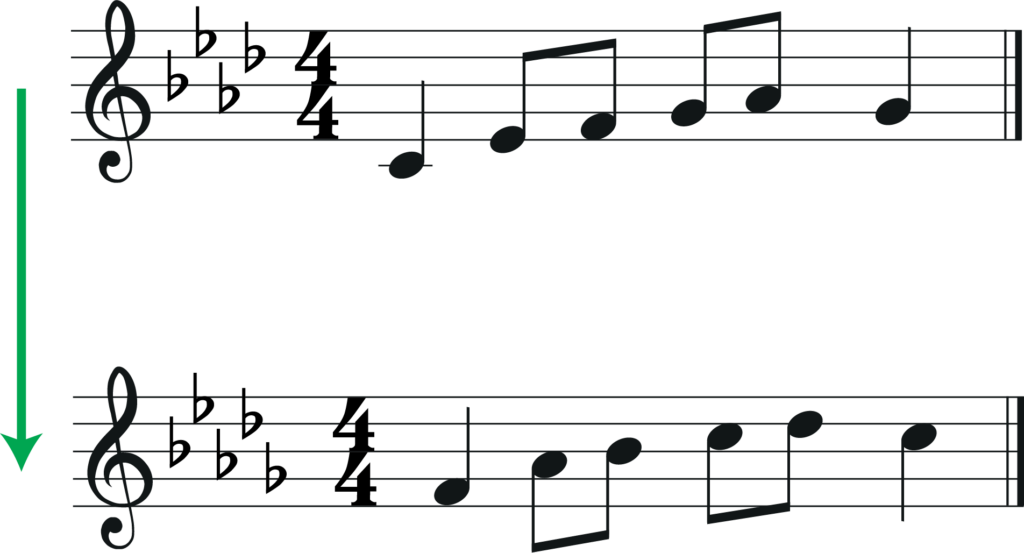Being able to transpose G to C is a great skill to have for any musician. It will allow you to play pieces written for transposing instruments, like the alto flute, and piece together ensembles so that everyone is playing in the same key!
Transposition is a tricky subject and it is really easy to make a mistake. But don’t worry, I have your back, so let’s look at how to transpose G to C.
If you want to learn more about transposing specifically for the alto flute, see our dedicated guide to alto flute transposition.
Transposition Chart for G – C

Steps to Transpose G to C
Transposing from G to C involves up moving the notes up 5 half-steps (semitones) or 2½ whole-step (tone). This is the same as moving up an interval of a Perfect 4th as C natural is the 4th note in the F major scale.
There are two different methods to transpose G to C.
Method 1- Move notes up one at a time
Have a look at the melody below.

The melody is written in key of D major. We could move all the notes up a 5 semitones, making sure that we take into account the F# and C# notes in the original key.

Here is the new melody. As you can see, we now have one sharp, so we are in the key of G Major.

Method 2 – Transpose the key signature
- We could move up all the notes up a 4th
- Transpose the key signature up a perfect 4th
- Deal with any notes outside the original key
Look at the melody below.

It is in Ab major so we have Bb, Eb, Ab and Db. First let’s move all the notes up a 4th. Intervals always include the starting note so in effect, this means moving up three positions on the staff.

Now we can transpose our key signature. A perfect 4th above Ab is Db. Another way to put this is that D flat is the 4th note of the A flat major scale. So our new key signature is D flat Major, which has five flats.
Here is our transposed melody with the new key signature.

Here is the full transposition.

If there were any accidentals that were outside the original key of Ab, we would not use this method. Instead we would treat these as individual notes and transpose them on their own. So if we had a C# then this would move up to an F# (5 half-steps above).
Using computer software
A far quicker method of transposition is to use software to do it for you! Apps like Musescore, Sibelius and Finale will transpose whole pieces with the press of a few buttons. You can then export, print and share your new transposed sheet music.
What’s next….?
- More on transposition for the alto flute in G
- All our transposition guides.
